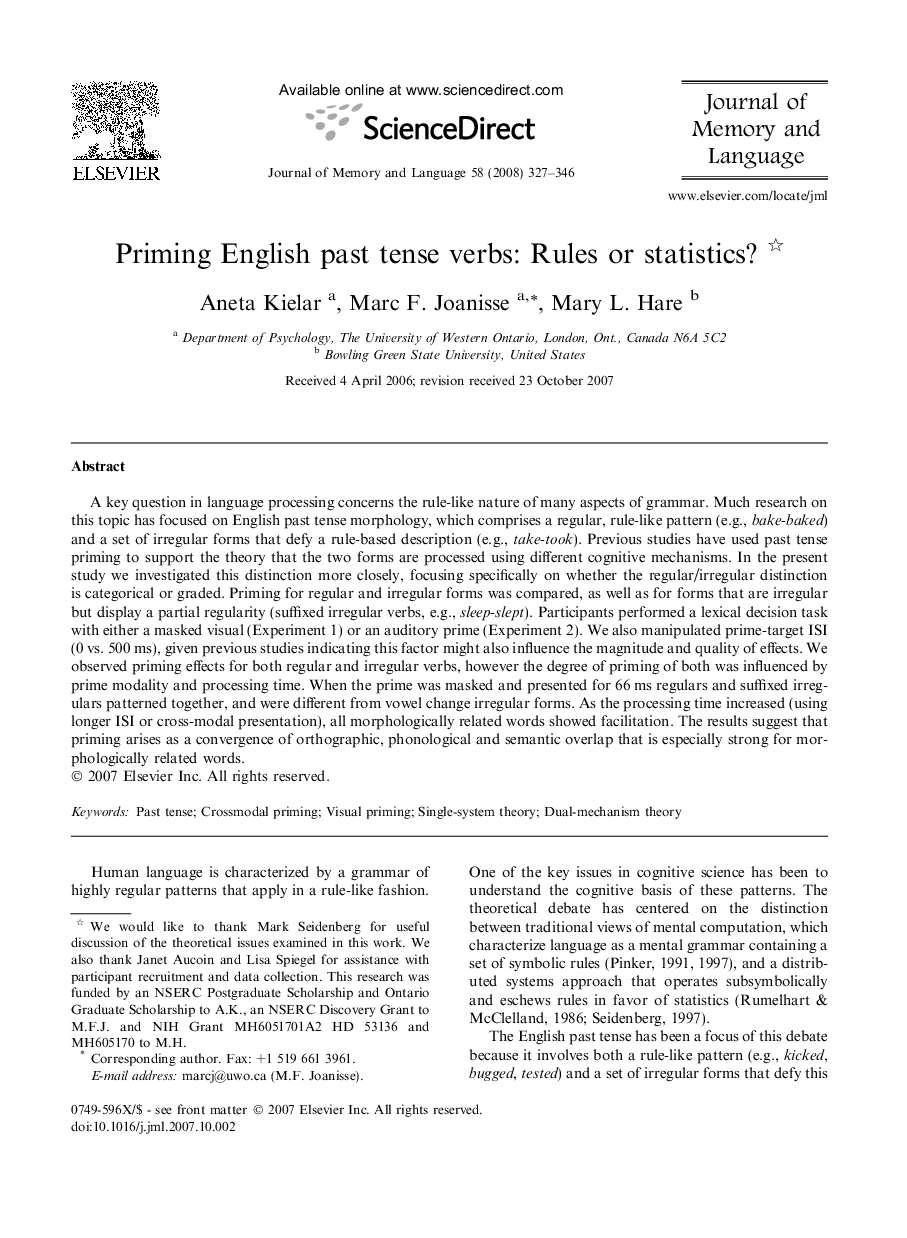| Article ID | Journal | Published Year | Pages | File Type |
|---|---|---|---|---|
| 932275 | Journal of Memory and Language | 2008 | 20 Pages |
A key question in language processing concerns the rule-like nature of many aspects of grammar. Much research on this topic has focused on English past tense morphology, which comprises a regular, rule-like pattern (e.g., bake-baked) and a set of irregular forms that defy a rule-based description (e.g., take-took). Previous studies have used past tense priming to support the theory that the two forms are processed using different cognitive mechanisms. In the present study we investigated this distinction more closely, focusing specifically on whether the regular/irregular distinction is categorical or graded. Priming for regular and irregular forms was compared, as well as for forms that are irregular but display a partial regularity (suffixed irregular verbs, e.g., sleep-slept). Participants performed a lexical decision task with either a masked visual (Experiment 1) or an auditory prime (Experiment 2). We also manipulated prime-target ISI (0 vs. 500 ms), given previous studies indicating this factor might also influence the magnitude and quality of effects. We observed priming effects for both regular and irregular verbs, however the degree of priming of both was influenced by prime modality and processing time. When the prime was masked and presented for 66 ms regulars and suffixed irregulars patterned together, and were different from vowel change irregular forms. As the processing time increased (using longer ISI or cross-modal presentation), all morphologically related words showed facilitation. The results suggest that priming arises as a convergence of orthographic, phonological and semantic overlap that is especially strong for morphologically related words.
